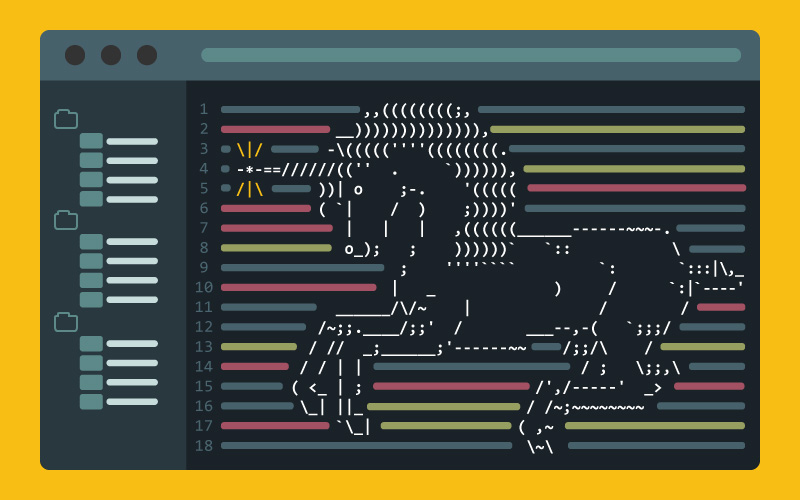
“Unicorn.”
That’s what Charlie, our lead designer, called me when I first joined the White Lion team a little over a year ago. No, it’s not because I have a horn protruding from my forehead that affords me magical powers. Rather, he was referring to the fact that I was both a web designer and a developer, and the term was meant to express the rarity of my multi-disciplinary skill-set by likening me to the imaginative creature of fairy tales.
I had never been described that way before, and it seemed odd. Primarily because I had both designed and developed websites for four years (100% of my career to date), and it was all I knew. It was only then that I discovered there was a time that my particular skill set was not exactly commonplace.
In 2010, around the time I got my start in the industry, Elliot Jay Stocks, now the Creative Director of Adobe TypeKit, tweeted the following comment that sparked quite a bit of discussion:
“I’m shocked that in 2010 I’m still coming across ‘web designers’ who can’t code their own designs.”
Apparently, even five years ago, designers were practically expected to be developers, as well. If then, all the more now. It can be argued that, in 2015, if you work in the world of web, the days are all but gone where you can call yourself a web designer and not also claim proficiency in HTML, CSS and at least some jQuery.
So why the pressure on designers to learn how to develop as well? The following are but a few answers to that question:
1. The Utility of Versatility
Often, in the production process, far more hours are spent translating a design to code rather than on the design itself. Therefore, once the design aspect of a project is complete, if a designer doesn’t also know how to code, she could be left twiddling her thumbs, waiting for the next design project to come along, while new development work that comes in (if not from new projects, from existing clients on retainer for regular maintenance) gets backlogged for already overloaded front-end developers.
However, a designer who also writes code has the flexibility to shift between multiple disciplines when needed. This can be invaluable to a team that has a steady flow of development work with only short spurts of design work.
This was actually the case recently for our front-end department here at White Lion. We had a high volume of development work, and with only two (at the time) dedicated front-end developers to bear the majority of the load, Charlie (a self-taught unicorn himself), stepped up and took ownership of some of the front-end work, allowing Nicholas (our lead front-end developer) and me to stay focused on more demanding front-end tasks.
2. Bridging the Communication Gap
Designers who code also are able to better communicate with other developers about how to implement their design—that is, if they won’t be developing it themselves.
The designers can understand what the code is capable of and allow that to inform their design decisions. They can better grasp the complexities of certain layouts—for example: why a grid of equal-height boxes containing variable content on a responsive website just isn’t practical.
Therefore, collaboration between a code-writing designer and a dedicated developer will be much more productive and efficient than if the designer had no development knowledge at all. Or as Rebekah Cox, previously the lead designer at Quora, put it:
“Knowing the technology better means more productive arguments when there are disagreements because everyone speaks the same language.” (Source)
3. Making Design Decisions on the Fly
Sometimes there isn’t time to design every detail of a website. If such a situation occurs, a front-end developer will need to make design decisions on the fly about how to implement a new feature that has not been mocked up by a creative. Designers who know how to code (or rather coders who understand design) will be better able to complete the new feature without degrading the design, by adhering to the overall aesthetic, even in the absence of a mockup.
4. Less Time Syncs, Less Knowledge Leaks
There’s nothing more frustrating to a designer than seeing their design mangled by developers who are typically less concerned about the pixel-perfection than they are about the functionality of the end product. For many developers if the product works, and it looks “close enough” to the mockup they received from the designer, then they are OK with calling it a day. However, for a designer, every pixel out of alignment is one more hair lost. (As a designer who also codes, I have experienced both sides of this tension.)
But if the designer also codes, there is no longer a reason for anxiety. Once the mockup is done, the designer can then put on her developer hat and implement the design exactly as she intended. And by doing both, this also circumvents the need for hand-off meetings between the designer and other developers, as well as any spontaneous collaboration and design reviews along the way, thus saving company time and client money.
The arguments made in this article in support of designers learning to code naturally lead to a few questions: How much code should a designer be expected to know? Also, should a developer be expected to know design? However, those questions are beyond the scope of this post. For now, suffice it to say that a designer who codes will be more valuable to a web development team (agency or otherwise) than one who does not. And the more code a designer knows, the more valuable that designer will become.


